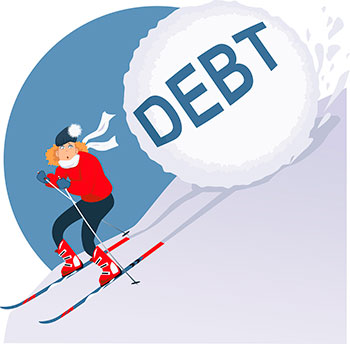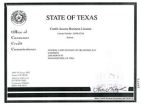What is a Debt Snowball?
Even though everyone tries to make good financial decisions, sometimes a little debt can spiral out of control. Suddenly, you find yourself with a pile of bills and a whole lot of stress. So what do you do? Create a plan! The debt snowball method is a way of tackling your debt in small and manageable steps, so you can easily make progress without feeling overwhelmed. Let's go into the basics of the debt snowball method, and learn how to get out of debt!

Step 1: Make a List
Before you can pay off all your debts, you need to know exactly who and what you need to pay. Make a list of all your debts in order of smallest to largest. For now, ignore the interest rate and just pay attention to the total amount owed. Here is an example:
- Credit Card: $1,000
- Auto Payment: $3,000
- Student Loans: $10,000
- Mortgage: $50,000
This list will become your blueprint for debt reduction. From now on, you will pay the minimum payment on every bill on your list - except for the smallest. The smallest bill is your first priority for elimination. That means any spare cash that you encounter will go into paying that bill until it is fully paid off. In this example, you would pay the minimum amounts on your auto payments and student loans. But any money you obtain through a second job, gifts, or budgeting will go toward your $1,000 credit card bill. Once the credit card bill is paid, repeat the process for your auto payment and so forth.
Step 2: Make a Budget
Prioritizing your debts is just one part of the debt snowball process. The other crucial step is to make a reasonable budget. List out all of your expenses for the month. This will include essentials like mortgage or rent, as well as non-essentials like entertainment. Here is an example:
- Mortgage/Rent: $600
- Utilities: $100
- Groceries: $200
- Entertainment: $50
- Gas: $50
Let's assume that this person makes $1,400 per month. Combined, their monthly expenses cost $1,000. That leaves $400 toward the four bills listed earlier without making any changes. However, a few budget cuts will free up even more money. Can you spend less on entertainment? Cancel a few monthly services like unused gym memberships or streaming media subscriptions? These small steps can help you get out of debt even faster
Pros and Cons
While the debt snowball method can teach anyone how to get out of debt, it's just one of many techniques that you can try - along with debt consolidation and credit counseling. Here are a few of the pros and cons to help you decide if it's right for you:
Pros:
- The debt snowball helps you stay motivated, because you can chip away at debts incrementally.
- This method helps you focus on just one bill at a time, rather than trying to address everything at once.
Cons:
- This method doesn't address interest rates, which many argue is a crucial step of debt management.
- Putting all available funds toward bill repayment can be risky. Some experts caution against depleting cash reserves and emergency funds.
